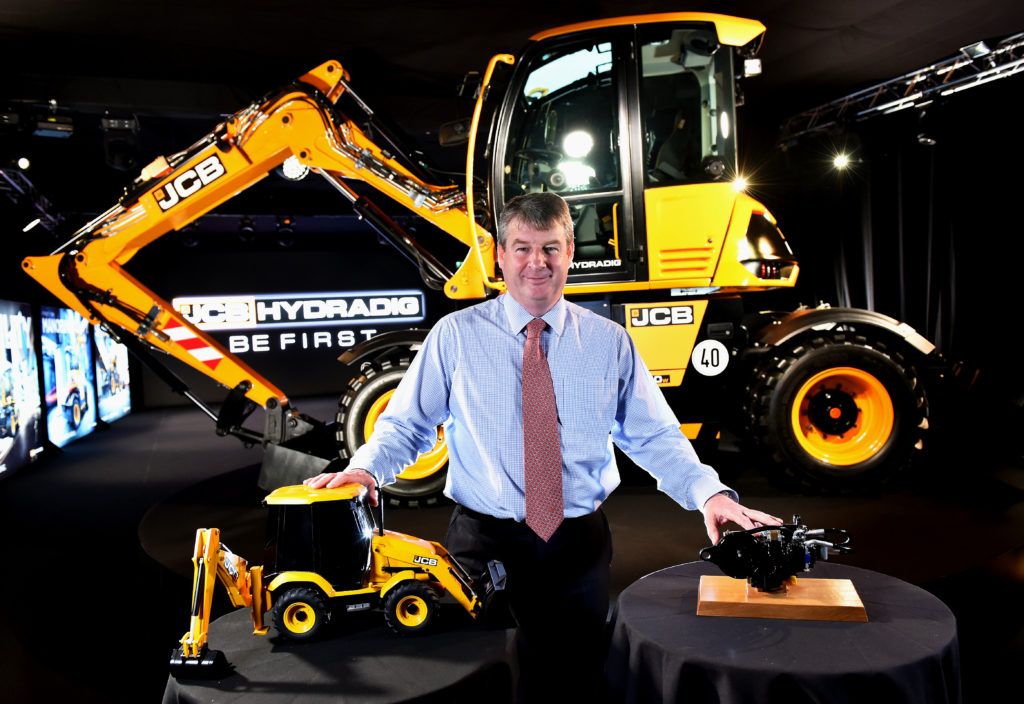Ongoing pressure from government regulating authorities to reduce vehicle emissions and fuel consumption has been a constant consideration for off-highway vehicle OEMs over the past 20 years.
Stakeholders across the industry, including those involved in powertrain- and emissions-related technologies, are in favor of more environmentally friendly practices. This is also true in related sectors, from light passenger vehicles, right through to commercial and heavy goods vehicles.
In many of these segments, all-electric or hybrid is practical and cost-effective, and will lead to improved air quality. However, the future isn’t all electric – at least not yet – and it’s not all internal combustion engines either – each fuel has its place. For industrial segments, where the end users are concentrated on productivity, ‘clean’ diesel should, and will, remain the dominant fuel for the foreseeable future.
It should be said as well that these diesels aren’t the diesels that emit black smoke and high levels of NOX, which is invisible until it forms smog with other pollutants. They aren’t even the ‘clean’ diesels that were heavily promoted by a number of car manufacturers, whose actions will have negative consequences for the broader industry for some time.
These are cleaner diesels that produce considerably less than 10% of pre-regulated diesels noxious emissions, in machines that on average are at least 15% improved in terms of fuel efficiency. They are functioning in an industry where optimizing operating costs means the difference between making a profit and staying in business, and losing money and disappearing.
In essence, they are a productivity tool that makes a positive contribution at all levels of the economy.
Why are OEMs banking on diesel?
Industry commitment to clean diesel is evidenced by its R&D spend. Even in the most severe recession in living memory, this outlay was somewhere between 2% and 4% of revenues. Across the commercial vehicle and non-road mobile machinery segments, this equated to around US$10bn per year, of which half on average has been spent on emissions and powertrain improvement, totaling US$50bn over the past 10 years. On top of that, a similar amount has been spent on capital investment in plant.
So why is diesel still seen as the best fuel for off-highway industrial vehicles? A key reason is that the energy density of diesel is much higher than for any other fuel.
Gasoline would be impractical – and unsafe in many jobsites. Not only would equipment need refueling a lot more frequently, increasing cost and reducing productivity, but direct-injection gasoline engines would also require adoption of specialized particulate filters to clean up the PM 2.5 particulates, which a modern diesel tailpipe already has regulated through the particulate filter that will come as standard with Stage V. Equally, for the majority of equipment, electric would be impractical.
For a typical shift, an all-electric mid-range excavator would need a battery at least five times the size of a typical Tesla S model, costing over US$100,000.
Cars versus industrial vehicles
However, on a practical level, and for a number of very good reasons, it doesn’t even make sense to compare light vehicles with industrial vehicles.
Firstly, in the light vehicle segment, the top 20 manufacturing groups account for 90% of the global 92 million units produced in 2016 – on average 4.1 million each.
A further 30 accounted for the remaining 10 million units – or an average of 300,000 each. In comparison, in the commercial vehicle segment, the top 20 accounted for 82% of the 3.1 million units, and another 66 accounted for the remaining 558,000
(an average of 8,454 units each).
However, in the construction segment, an estimated 628,000 units were shared across the top 20, or 31,400 each, and another 100+ accounted for the remaining 134,000, or roughly just 1,300 units each. This means it is impossible for industrial vehicle OEMs to achieve the economies of scale enjoyed by OEMs dedicated to building smaller vehicles.
Industrial vehicle OEMs also don’t necessarily have so much control over all aspects of their vehicle design – many of them don’t have their own engines, for example. Of the top 10 OEMs, the majority have their own engines, but in the top 20, less than 40% are supplied in-house, for various reasons.
Furthermore, overall product variety is several orders of magnitude greater for industrial vehicles. This is not due to competition or because volumes are low, but because many are specialist machines.
So, to some extent, it’s that volume equation that made it easier for passenger OEMs to ‘game’ the rules: the thinking goes, ‘If we do one, we might as well do them all’. In the non-road segment, where there is a much greater crossover of engines between OEMs, it would be a lot harder to ‘cheat’ the system.
What about hybrids and hydrogen?
The above doesn’t completely preclude development of electric and hybrid vehicles, and hybrids and alternative fuels will come, but in low volume initially.
However, a detailed assessment of the equipment population, considering load factors, fuel consumption and annual hours, suggests that in Europe the below 56kW segment uses around 15% of the total fuel, but accounts for almost 40% of the machine population.
Already, much of this segment is looking to hybrid
and electric, so economies of scale are improving, and technology has aided here. But, in the larger machines – over 56kW – this is not the case. A knock-on effect of greater emissions control is that machines have become more expensive; this, in turn, means the rental segment has grown. Across the top machine types in Europe, rental is estimated to have a greater than 70% share.
The rental sector is, by its nature, conservative when it comes to embracing new technology; downtime has a direct effect on the revenues of rental firms, so they are more likely to stick to tried-and-tested reliable machines. So, ironically, tightening emissions regulations may actually slow the roll-out of heavier, alternatively fueled industrial vehicles.
In the lightest segment, where emissions are not regulated until Stage V, we expect to see a lot more electric models. In many cases where these are used indoors, it makes sense. With either an umbilical or a power unit, the power requirements mean that the infrastructure for charging is not extensive. As we get into the higher power segments, however, the power requirements increase considerably. In the light segment, there is also a crossover between light vehicle systems and non-road electric and hybrid systems, which will allow more cost-effective electrification.
In the heavier segments, the volumes will be much lower, and so there will be limited opportunities. Even in the lighter segments, there are challenges in the non-road segment for electrification related to the conditions that the equipment works in, which can include large amounts of dust, vibration, and large temperature fluctuations.
Can diesel shake off its dirty image?
Much has already been done to clean up diesel’s act. And there are further improvements that will be made in the near future, suggesting that, yes, diesel will get much cleaner and it will be with us in the industrial vehicle market for many years to come.
If technology trends follow the commercial vehicle segment, then there will continue to be improvements through the Stage V time period.
Many OEMs that didn’t have a DPF (diesel particulate filter) for Stage IV, but remain within the limits, will be able to benefit from the trade-off between fuel consumption, NOX generation and PM levels, by using higher levels of EGR (exhaust gas recirculation) to reduce emissions further. At the same time, we expect the initial PEMS (portable emissions measurement system) tests to show that machines are clean across the whole duty cycle, and offer similar compliance levels to those Euro VI trucks, which will continue to show improvements in emissions and fuel consumption.
Those Euro VI trucks that were tested were the first generation. Second- and third-generation trucks have added additional fuel consumption benefits while meeting stricter compliance requirements under Euro VI parts B and C, and a similar pattern is expected in the construction equipment segment.





